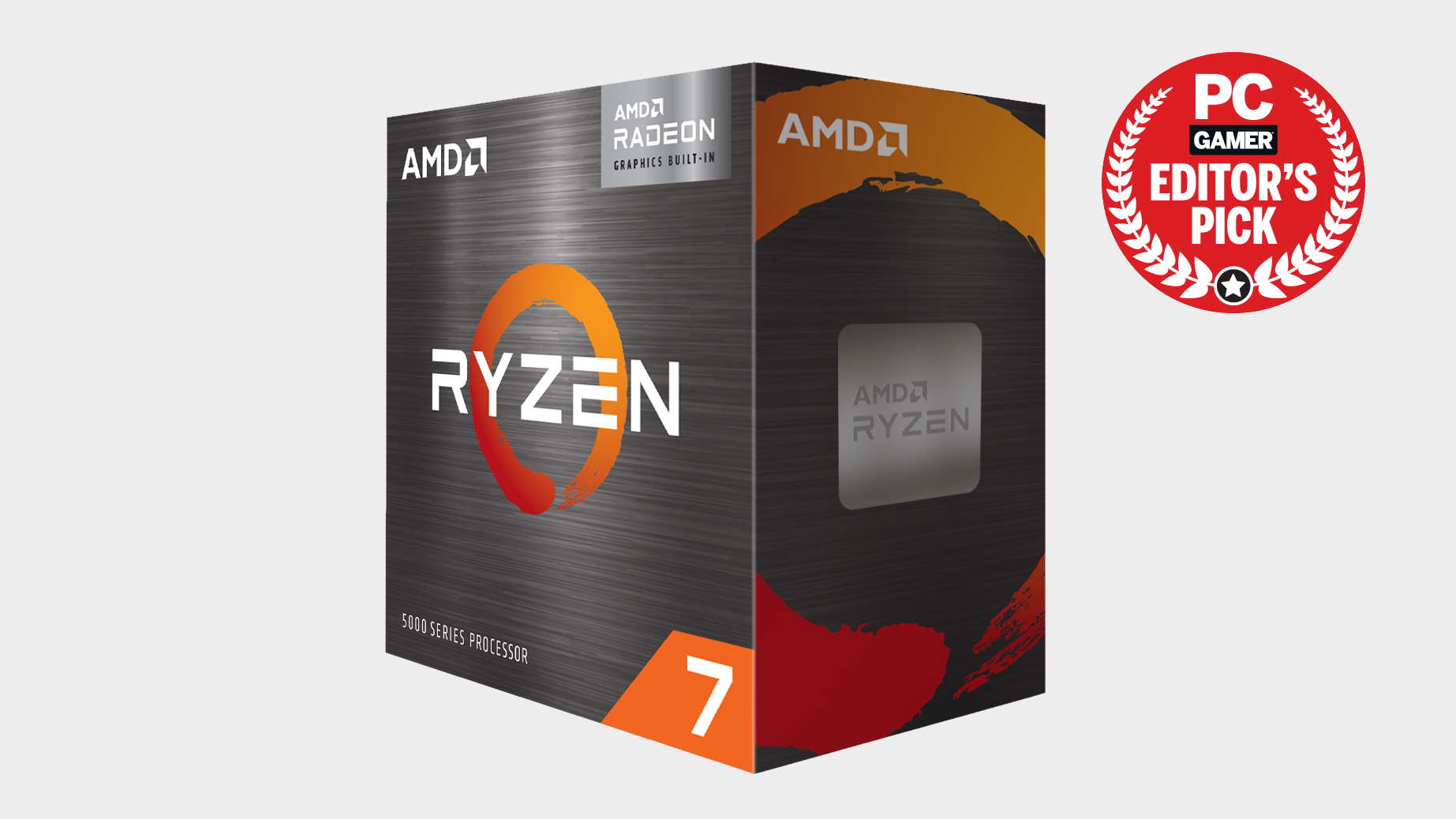Our Verdict
The 5700G is a fantastic all-rounder CPU, combining the best ever integrated graphics with eight speedy Zen 3 cores while keeping under a 65W TDP.
For
- The best Integrated GPU
- Excellent thermals and power consumption
- Strong all round performance
Against
- Lacks PCIe 4.0
PC Gamer's got your back
Struggling to find a graphics card in these silicon-starved times? AMD may suggest that, with the new Ryzen 7 5700G, you might not necessarily need one for PC gaming today.
AMD’s Ryzen 5000 series of CPUs have been very well received, though, like every other manufacturer of processors and graphics cards, AMD has been affected by wider semiconductor market issues. Limited supply meant that production priority was given to the high end chips in both the red team's CPU and GPU stacks. That means we haven't seen any really affordable Zen 3 based processors, at least not in the retail market.
That doesn't necessarily change today with the introduction of the 'Cezanne' family of APUs. That's led by the $359, eight-core Ryzen 7 5700G. It is joined by the $229, hexacore Ryzen 5 5600G and the quad-core Ryzen 3 5300G, which we don't yet have a price for. That's a little under the current pricing for the GPU-less Ryzen 7 5800X and Ryzen 5 5600X, and you're arguably getting more for your money too.
But finally, AMD has processors that combine its strong Zen 3 architecture with capable Vega-based integrated graphics. They are the first in the retail market since the release of the Zen+ based 3200G and 3400G in mid 2019.
Though that still feels like a strange reversal on the Steam Deck's new APU, which matches the older Zen 2 CPU architecture with the two generations more modern RDNA 2 graphics cores.
AMD has traditionally had strong integrated graphics solutions. Even during its weaker pre-Ryzen years its APUs always filled a solid niche in the market. And they’ve been sadly missed, even more so during the current chip crisis when many gamers either couldn’t find or couldn't afford discrete graphics solutions.
The promise of Zen 3 cores and best-in-class integrated graphics has been eagerly anticipated and we’ll be eagerly watching to see how fully 5000G series models filter out into the market. It was, after all, tricky to find AMD's APUs on sale even before the latest chip supply issues struck in earnest. But the 5000G series aims to bring AMD back to full competitiveness in the lower to middle market, even though the likes of the Ryzen 3 3100 and Ryzen 3 3300X are yet to be replaced by Zen 3 counterparts.
I still think it’s a rather stunning state of affairs that Intel’s 11th Gen Core i5 11400 and i5 11500 are the best budget CPUs right now, while AMD’s 12- and 16-core models are the enthusiast picks. Traditionally the processor market has been the other way around entirely.

Socket: AM4
Lithography: TSMC 7nm
Cores: 8
Threads: 16
Base clock speed: 3.8GHz
Boost clock speed: 4.6GHz
Cache: 16MB L3
Memory support: Up to DDR4-3200
Integrated graphics: RX Vega 8 Graphics
Compute Units: Eight
GPU cores: 512
TDP: 65W
MSRP: $359 | £310
Moving on to the 5700G specs. It’s a Zen 3 based processor with a 7nm, 180mm2 10.7 billion transistor monolithic die, with 8 cores and 16 threads. And by monolithic we mean that it doesn't match the chiplet design of the other Ryzen 5000-series CPUs, instead squeezing everything into one traditional package design.
The 5700G has a base frequency of 3.8GHz and a boost frequency of 4.6GHz, yet it still has a very desirable 65W TDP. But to meet this 65W target, some sacrifices had to be made; it’s not simply a down-clocked 5800X with integrated graphics bolted on.
You lose half of the L3 cache (16MB vs. the 32MB of the 5800X) and you also lose PCIe 4.0 support, meaning you don't get access to the best SSDs around today. The latter certainly isn’t desirable, though apart from losing that peak NVMe SSD performance, much of the target market may not even notice. Official memory support matches the other Zen 3 chips, at DDR4-3200.
Notably, you’ll also get AMD’s Wraith Stealth cooler. That’s a nice value add, though we'd say it’s adequate at best, and pretty much any aftermarket AM4 CPU cooler will outperform it.
The integrated graphics does count as best-in-class, though it's still based on the ageing, though reworked and well optimised, Vega architecture. That comprises eight compute units, and 512 GCN cores, operating at 2GHz. RDNA-based graphics, not to mention RDNA 2, will have to wait at least one more generation.
AMD's integrated Vega GPUs are known to benefit from faster memory, so if you plan to game with it, we’d advise you spend a few extra dollars to top that standard DDR4-3200 memory support and grab a decent set of DDR4-3600 RAM to eek out a few more frames. It will really show in gaming performance.
CPU performance

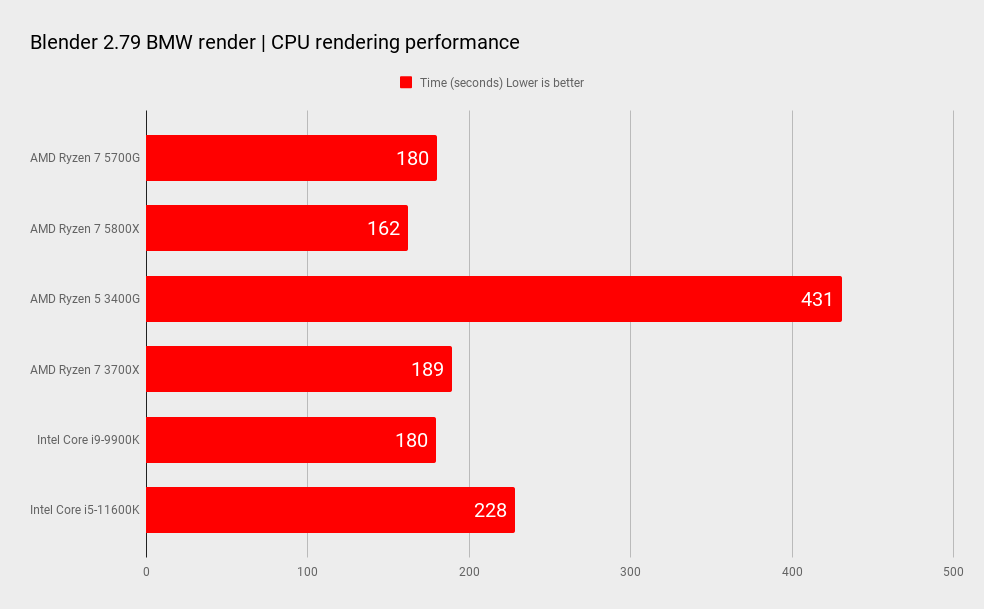






Forgetting the graphics side for a minute, the Ryzen 7 5700G shows itself to be a perfectly capable general purpose processor.
Productivity and gaming tasks all take a big step forward over the popular Zen 2 Ryzen 7 3700X. The exception being sequential SSD performance, where the lack of PCIe 4.0 counts against it when put up against the rest of the Ryzen 5000 clique. The 5800X, with its higher boost clock, extra TDP headroom, and increased cache is the better performer. That's as you’d expect, and under CPU-limited gaming loads, the extra cache is certainly helpful in terms of gaining higher frame rates.
As always, once the load shifts back to the GPU, the benefit of a faster processor itself diminishes. It's worth noting that the 5700G either matches, or beats the Intel Core i9 9900K, a CPU that still powers many a high-end gaming rig.

1080p iGPU gaming performance



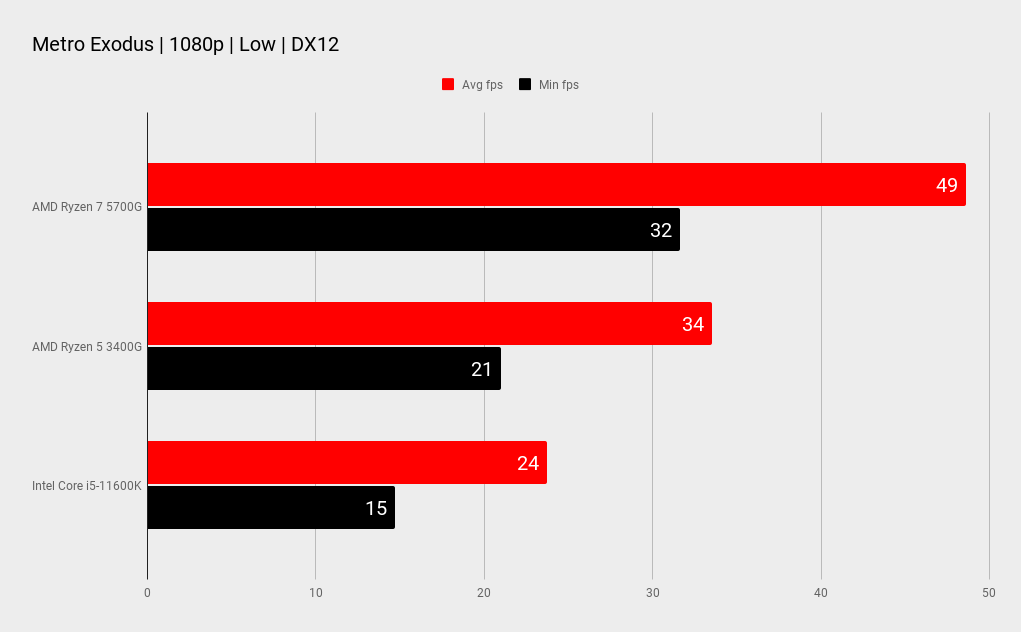

720p iGPU gaming performance


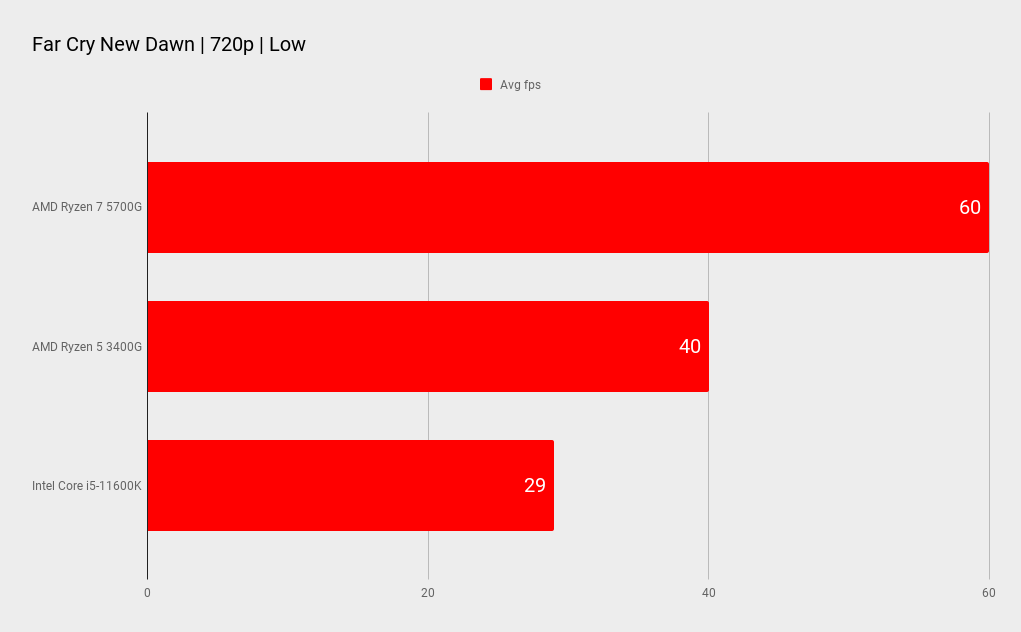


Motherboard: ASRock B550 Taichi Razer Ed.
GPU: MSI RTX 3080 Gaming X Trio
Memory: Teamgroup Xtreem ARGB 2x 8GB DDR4-3200
Storage: 1TB Samsung 860 Pro, 500GB Samsung 980 Pro
Cooling: Corsair H100i Pro 240mm AIO
PSU: Corsair AX1000
Case: Thermaltake Core P8
When it comes to integrated graphics performance, however, there’s the 5700G and then there’s clear daylight to the competition. For anyone wanting a bit of an idea of how Valve's Steam Deck—with its own eight compute units of upgraded RDNA 2 GPU silicon—will perform, the fact the older Vega chip can deliver 1080p gaming with low settings in demanding titles like Metro Exodus should be exciting.
This means games from a few years ago, or less demanding esport titles are perfectly playable. Intel’s Xe is a step forward over older UHD graphics but the EU counts are simply too low in its 14nm Rocket Lake processors to be in any way competitive.
Will Alder Lake spice things up again? It's tough to say, if we're being honest. AMD has RDNA 2 still in its locker, remember.
Zen 3 processors deliver awesome power efficiency and the 5700G follows that trait. Whiled looping Cinebench R20, we saw a peak power consumption of 77W, which is very impressive indeed. Don’t forget that something like a Core i7 11700K can use 3 times that.
Temperature wise, the 5700G is not demanding; our 240mm Corsair cooler was barely stressed with peak temps in the mid 60°C mark. Even a modest aftermarket air cooler won’t be stretched by a 5700G.
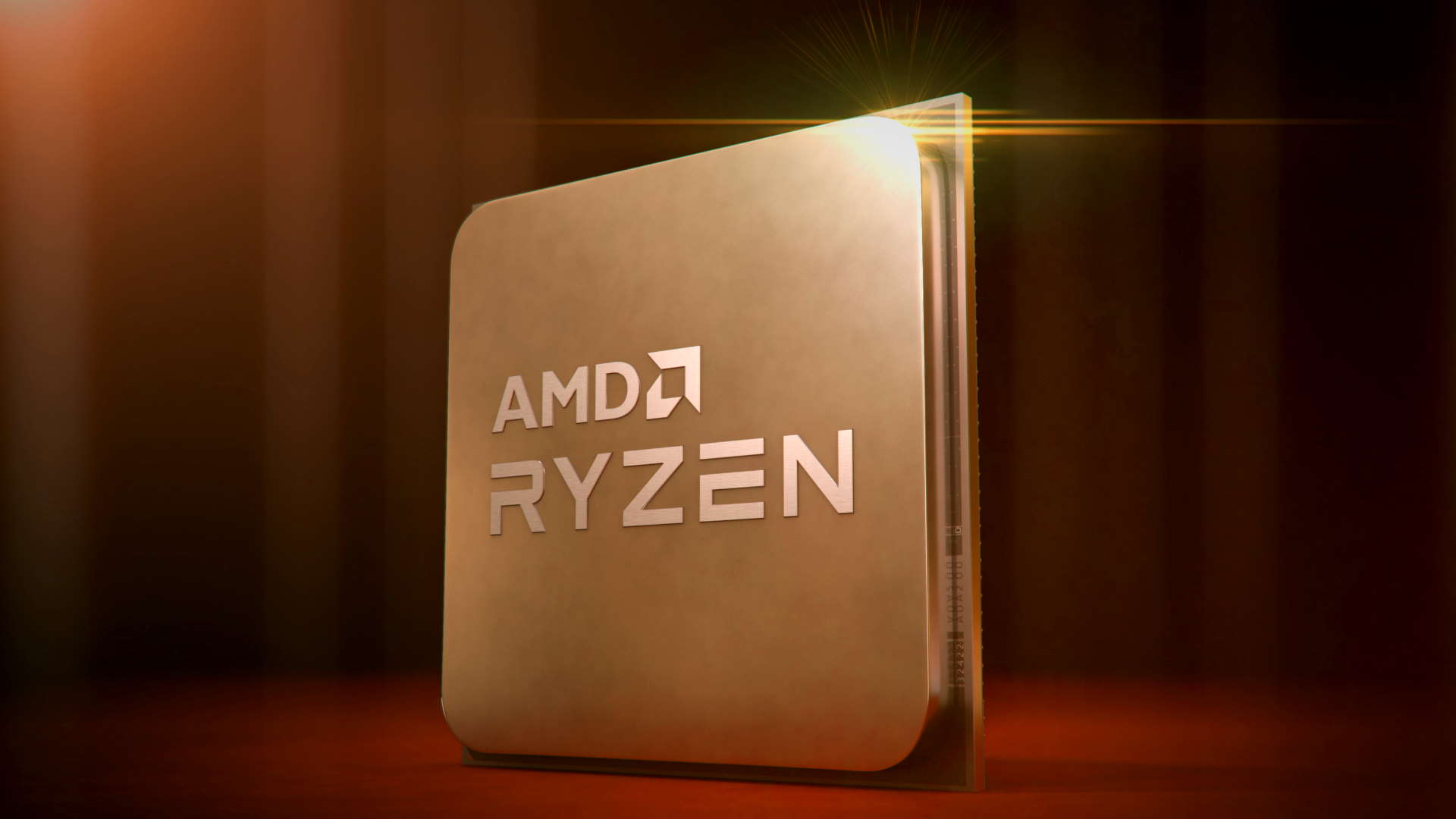
Summing up the 5700G needs to be done in context. It’s very good at pretty much everything, but competing solutions have specific benefits. The 5800X is the better processor with more cache and PCIe 4.0, while Intel’s i5 Rocket Lake processors are more affordable and excellent for gaming with a discrete GPU.
The 5700G’s graphics performance is certainly class leading, but it also remains as true as it ever was that integrated graphics simply can’t provide the horsepower of even a low-end discrete GPU.
Does that make the AMD Ryzen 7 5700G sound like a slouch? It shouldn't. A Ryzen 7 5800X absoluitely needs an aftermarket cooler and discrete GPU to run, while an eight core Rocket Lake chip will run hot and can use three times, or more power.
What the 5700G does is provide awesome convenience, well-rounded processing and graphics performance, and it does so within a 65W envelope.
If you’re looking for a powerful HTPC or small form factor machine, a PC for heavy multitasking, or you need something with integrated graphics to tide you over until the GPU market returns to normality, then the 5700G is an awesome APU. It’s also going to be a big upgrade all around for someone coming from a system that’s a few years old. Add a high-end GPU, even a GeForce RTX 3090 or Radeon RX 6900 XT with all the eye candy turned up, and you’d barely lose any real world performance compared to any other processor we could mention.
We know many PC gamers have been patiently waiting for Zen 3 APUs, and it's great that they’re finally here. You get the strong IPC and multi-threaded prowess that Zen 3 brings to the table, paired with top-end integrated graphics. You can run a monitor or two and enjoy some basic gaming, or even better than that: true gaming with older or e-sport titles, all while keeping around a 65W TDP. If you’re looking for a high performing jack of all trades slice of silicon, AMD's Ryzen 7 5700G is tough to beat.
The 5700G is a fantastic all-rounder CPU, combining the best ever integrated graphics with eight speedy Zen 3 cores while keeping under a 65W TDP.

Chris' gaming experiences go back to the mid-nineties when he conned his parents into buying an 'educational PC' that was conveniently overpowered to play Doom and Tie Fighter. He developed a love of extreme overclocking that destroyed his savings despite the cheaper hardware on offer via his job at a PC store. To afford more LN2 he began moonlighting as a reviewer for VR-Zone before jumping the fence to work for MSI Australia. Since then, he's gone back to journalism, enthusiastically reviewing the latest and greatest components for PC & Tech Authority, PC Powerplay and currently Australian Personal Computer magazine and PC Gamer. Chris still puts far too many hours into Borderlands 3, always striving to become a more efficient killer.
